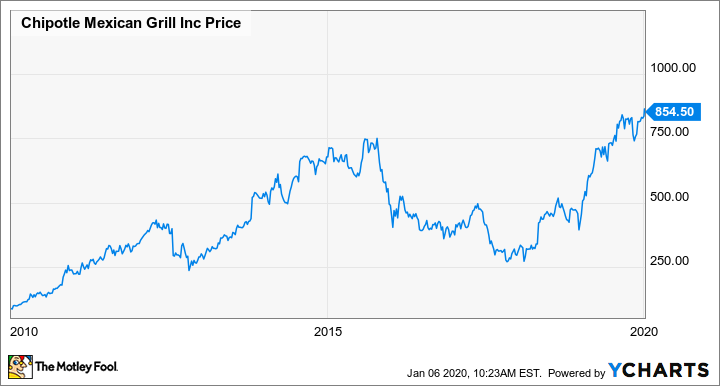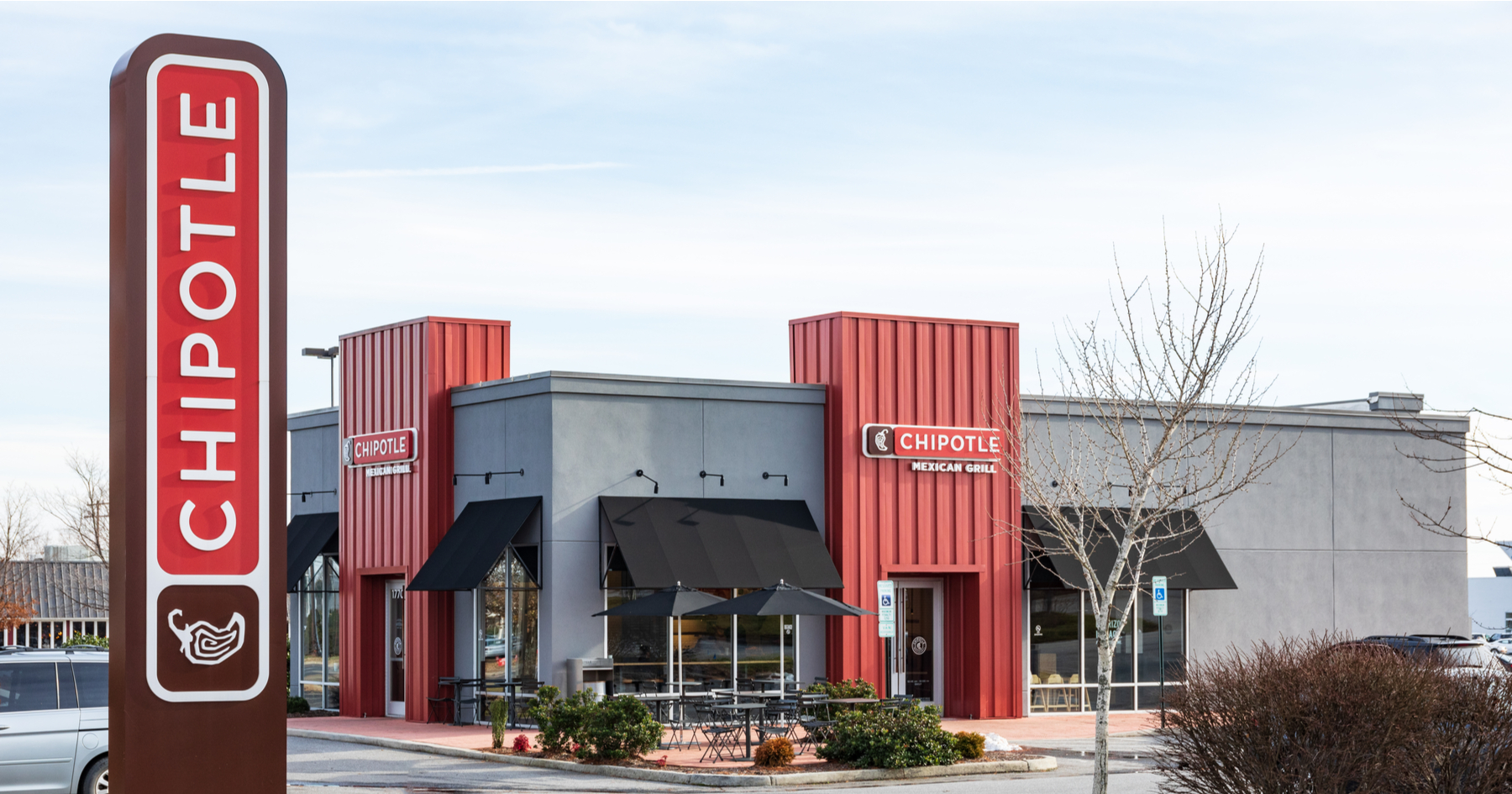Chipotle is a restaurant franchise in the United States that provides a basic menu of Mexican-inspired fare. Chipotle was founded in Denver, Colorado, in 1993 by Steve Ells, a classically trained chef, and has now expanded to over 2,000 restaurant locations, serving over 1 million people daily. The company is recognized for its “Food With Integrity” branding and marketing, as well as its dedication to delivering fresh meal items and sourcing products from ethically oriented suppliers. Chipotle’s premium cuisine ethos ushered in a new age of “fast-casual” eating experiences, many of which loosely imitated the chain’s successful approach to fresh cooking and assembly-line service.
Chipotle’s restaurant presence has expanded fast since going public in 2006, and it now includes outlets across Europe. Pizzeria Locale, the Asian-inspired ShopHouse Kitchen, and Tasty Made, a new burger restaurant, is among the company’s subsidiary brands. However, the company’s revenue has suffered as a result of a series of food-safety incidents linked to its iconic Chipotle brand in 2015, and it even announced its first quarterly loss in a decade. Chipotle has added new menu items such as chorizo and launched a rewards program called Chiptopia in an effort to boost sales and recover consumer confidence.

Chipotle Mexican Grill owns and operates over 2,700 quick-service restaurants known for burritos, tacos, burrito bowls, and salads. It also includes around 40 foreign eateries and four non-Chipotle locations. Chipotle serves chicken, beef, carnitas, sofritas, barbecued or free-range pig, as well as beans, rice, guacamole, and a variety of other vegetables and salsas. With additions, the business says that its menu gives thousands of options. Soft tacos, crunchy tacos, chips and salsa, beer, and margaritas are also available in Chipotle locations. Chipotle has about 25 regional distribution hubs that are separately owned and managed.
History of the fast-food giant
Steve Ells, the company’s founder, attended the Culinary Institute of America in Hyde Park, New York. After that, he worked as a line chef for Jeremiah Tower at Stars in San Francisco. Ells saw the popularity of taqueras and San Francisco burritos in the Mission District. Ells utilised what he learned in San Francisco and used a $85,000 loan from his father to build the first Chipotle in Denver, Colorado, in a former Dolly Madison Ice Cream Store on the University of Denver campus in 1993. Ells and his father determined that in order for the business to be successful, it would need to sell 107 burritos each day. The initial eatery was selling over 1,000 burritos each day after only one month. Chipotle’s cash flow was used to open the second location in 1995, and an SBA loan was used to open the third. Ells’ father invested $1.5 million to support more expansion. Ells then formed a board of directors and developed a business strategy, obtaining an extra $1.8 million for the firm. The first restaurant outside of Colorado opened in Kansas City, Missouri in 1998. Ells had intended to use the profits from the first Chipotle to establish a fine-dining restaurant, but after the restaurants’ success, he decided to focus on Chipotle Mexican Grill.
Investment from McDonald’s
McDonald’s made an initial minority investment in the company in 1998. By 2001, McDonald’s had expanded to become the largest investor in Chipotle. McDonald’s funding enabled the company to rapidly develop, from 16 outlets in 1998 to over 500 by 2005. Chipotle’s initial public offering (IPO) took place on January 26, 2006, after the share price had been raised twice owing to significant pre-IPO demand. The stock surged precisely 100 percent on its first day as a public business, culminating in the best U.S.-based IPO in six years and the second-best IPO for a restaurant behind Boston Market. The proceeds from the transaction were then utilised to support additional shop expansion.
Chipotle and McDonald’s marriage lasted a few years before flaws in their relationship led them to split. McDonald’s wants Chipotle to adopt a similar strategy to theirs by considering a morning menu, drive-thrus, and even altering their name! By 2005, McDonald’s owned 90 percent of Chipotle.
McDonald’s reclaimed the $1.5 billion it had previously paid to Chipotle in 2006. Based on the share price trend of Chipotle, if McDonald’s had stuck with them for another decade, that $1.5 billion would have grown to $15 billion. When the two split ways, it was apparent that they had distinct attitudes to business, cuisine, ideologies, and strategy.
Qdoba Mexican Grill, Moe’s Southwest Grill, Rubio’s Fresh Mexican Grill, Panchero’s Mexican Grill, Freebirds World Burrito, and Baja Fresh are competitors in the fast-casual Mexican industry. Chipotle was placed ninth on a list of the fastest-growing restaurant chains in 2009, based on gains in U.S. sales over the previous year, and third in 2010.
Expansion in the international markets
By October 2014, Chipotle had 17 locations outside of the United States, with the majority in Canada, and the UK was in the process of establishing more. The rate of international expansion has been slower than anticipated. Many of the press critics believed the meal was expensive for the location.
Outside of the United States, there are 33 outlets, including 19 in Canada (Ottawa, Toronto, Markham, Vaughan, Mississauga, Oakville, and Vancouver), 6 in the United Kingdom (London), 6 in France (Paris), and 2 in Germany (Frankfurt).
Canada
In August 2008, Chipotle opened its first location outside of the United States in Toronto. The second location in Toronto–and in all of Canada–was not opened until 2010.
The first Canadian location outside of the Toronto area was opened in Vancouver in December 2012. A second Vancouver-area location was opened in Burnaby in October 2014 followed by a third in Surrey in January 2016, a fourth in Langley in October 2016, and a fifth in West Vancouver in March 2018.
The first location in the nation’s capital of Ottawa was opened in February 2017 at the Rideau Centre.
United Kingdom
The second Chipotle Mexican Grill location in London, located on Baker Street. Chipotle expanded to Europe with the first European restaurant opening in May 2010 in London.A second location opened in London in September 2011.The following year, three additional locations were quickly opened in the London area.
After this growth spurt, the rate of further expansion in London slowed greatly with the sixth location appearing in 2013 and the seventh in June 2015. Although Chipotle blames the slow growth in the United Kingdom on the British unfamiliarity with Mexican foods, several locally owned burrito chains had opened locations across the United Kingdom during the same interval.
France
The first location in France opened in Paris in May 2012. Expansion in France was much slower than that in the United Kingdom or Canada, with a second location in Paris opening in 2013 and the third location in 2014. At 7,000 square feet, the restaurant at La Défense is, as of 2015, the largest Chipotle location in the world, while a typical Chipotle restaurant is usually between 2,200 and 2,500 square feet. A fourth Parisian location was opened in Levallois-Perret in 2015 followed by a fifth and a sixth Parisian location in 2016, both in Saint-Germain-des-Prés.
Germany
The first location in Germany opened up in Frankfurt’s Skyline Plaza shopping mall in August 2013. A second location opened in Frankfurt’s MyZeil shopping mall in April 2019.
Marketing and Advertising Strategy of Chipotle
The success of Chipotle would not have been possible without its customer-centric marketing strategy:
Authenticity: This company combined all of the features of a fast-food chain – rapid service, large servings, low costs – and created its own identity by emphasizing the use of fresh products. Chipotle has been expanding on the value of ‘Authenticity’ by presenting tales about its products and workers across media touchpoints, including the concept into its business model and marketing strategy.
Also Read: McDonald’s – The World’s Most Admired Fast-Food Brand
Leveraging Digital: Because the majority of Chipotle’s customers are Millennials and Generation Z, the company has made excellent use of different digital platforms:
Snapchat: They introduced Snapchat stickers that the youngsters could use easily.
Instagram: They launched a lid flip trick video of their employee on their Instagram page, which got 1 million views.
TikTok: Chipotle was one of the first big brands to see the potential of the social video app. They took the lid flip challenge further with influencers on TikTok, getting a quarter-billion views in just a short time for the brand.
To reach those generations, particularly Gen Z, they have collaborated with TikTok on marketing efforts such as the #GuacDance challenge and the #Boorito challenge.
Customers participated in the #GuacDance challenge, with a total of 250,000 video uploads, resulting in Chipotle selling 802,000 sides of guacamole. Then, for Halloween, the firm urged its consumers to post a TikTok video of themselves dressed up in their best costumes with the hashtag #Boorito.
Twitter: Since the official sponsor of NBA is Taco Bell, a direct competitor of Chipotle, they chose the route of guerilla marketing on Twitter to hijack the conversation around basketball during the NBA Finals. Every time an announcer said the word “free” on-air during game time, the food brand tweeted a special code that could be used to get a free burrito. The campaign did extremely well and gave Chipotle the reputation of an innovative marketer.
Personalized Marketing: In 2019, Chipotle established its loyalty programme. Over the course of two years, they amassed more than 23 million rewards members. With all of the data at its disposal, the burrito business is aware of all of its customers’ culinary preferences.
Chipotle frequently surprises its members with exclusive incentives and engages its customers in the brand message. This type of customized marketing, which makes use of the power of data analytics, increases brand engagement and footfall, resulting in more sales.
Being purposeful: Gen Z customers are aware of the brands with which they interact. As a result, Chipotle introduced ‘Real Foodprint,’ a first-of-its-kind sustainability tracker that allows customers to measure how much water they helped save while ordering using their mobile app. In 2021, the brand even launched sustainability-focused advertisements during the Super Bowl, the most-watched sporting event in the United States.
Go to the full page to view and submit the form.

